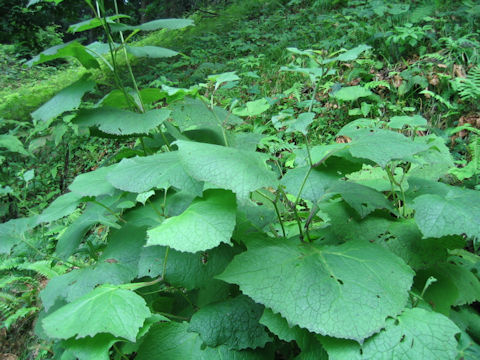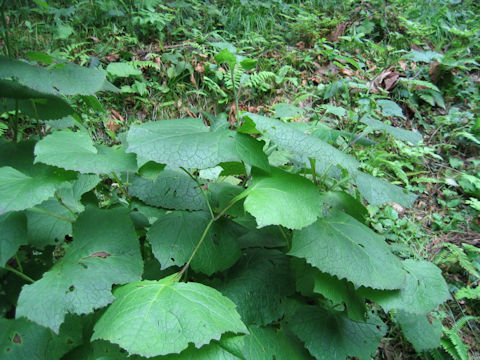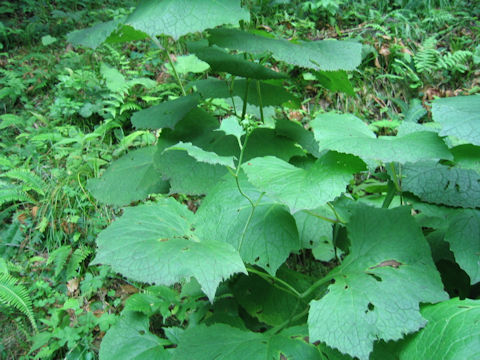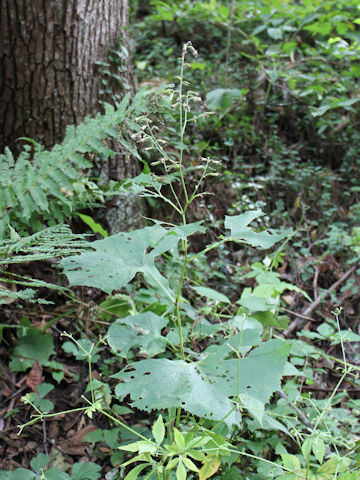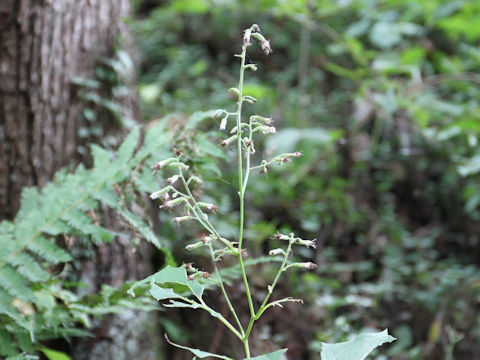
|
The "Yobusuma-so" (Cacalia hastata ssp. orientalis) belongs to Asteraceae (the Aster family). It is a perennial herb that is distributed from Kanto region of Honshu north to Hokkaido in Japan. This herb grows in wettish forests of deep mountains, and up to a height of 1-2 m. Leaves are triangular-hastate or triangular-reniform, and have a length of 25-35 cm. Petioles are wide winged. The head flowers that tubular flowers gather bloom in spikes atop of stems from July to October. In Tohoku district, it is called "Honna" and young shoots are used as a wild vegetable. The Japanese name is derived from the shape of this leaf, which resembles a bat and a flying squirrel as its flying figure. By the way, "Yobusuma" is the nightclothes made by stitching old kimonos, which is also used as a dialect pointing to bats and flying squirres.
|

